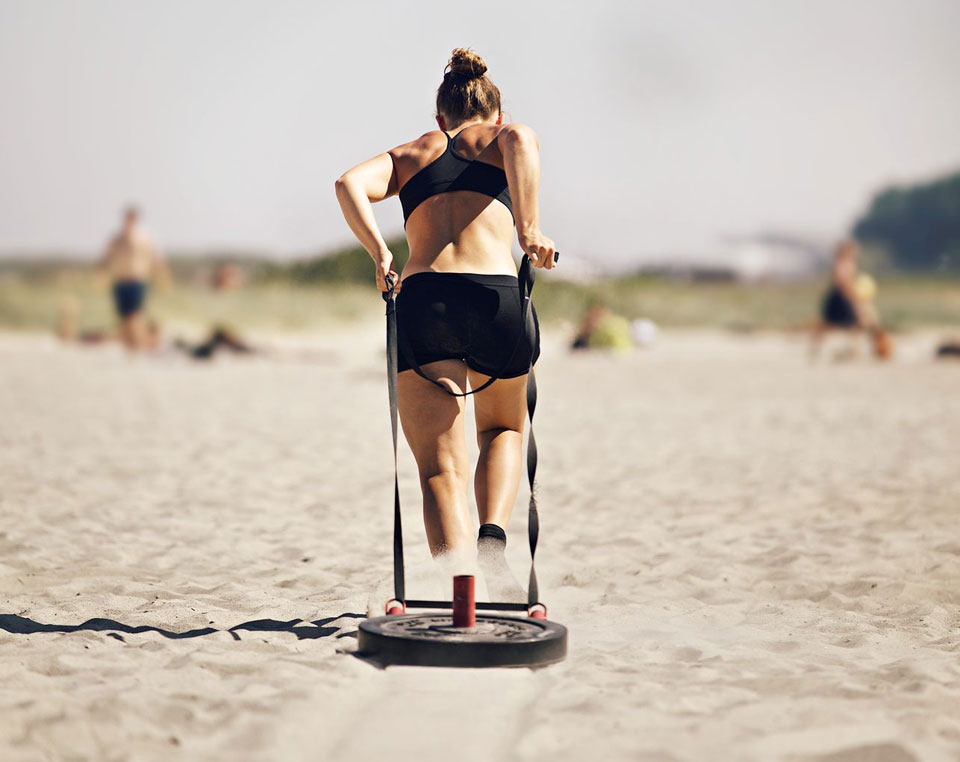We all like to think that we’re tuned in to our body rhythms, but in fact, runners tend to be cut of different cloth. We’re risk-takers. No challenge is too daunting, and in the spirit of finishing an arduous race or conditioning course, it just feels right to push past the pain and “Go for it!” But, unless you’re a practising physician, diagnosing your own pain can be tricky. You don’t have to have a medical degree to know when something “doesn’t feel right”, but it helps to be a bit more informed so you can differentiate good pain from bad pain.
Jenny Hadfield knows a thing or two about pain. Her posts have appeared in heavyweight fitness publications like Women’s Running, Self, Women’s Health and even Forbes, so when she addresses the topic of good and bad pain on her website, we’re all ears.
Jenny encourages runners to pay attention to Fatigue because it’s an often-ignored feeling that has the potential to trigger injury. For example, your legs feel heavier than they did at the start of your run. That could mean that you are pushing beyond your comfort zone and need to moderate your zeal, easing into longer distances rather than sprinting into them in the name of progress. Building tolerance is going to trigger aches and pains, but you’ll experience fewer of them if you build a proper base incrementally.

Fighting Through Pain?
How do you feel about the wisdom of “fighting or pushing through pain”? It’s a good question to ask of yourself because it’s a hotly debated topic, but it’s your body and no one else can make the decision for you based on your personal pain tolerance levels and running philosophy. That stated, if you insist on pushing through any pain and do so repeatedly, not only do you become a prime candidate for injury, but your running buddies may get tired of hearing you whine if this is habitual behaviour on your part!

Common Running Aches and Pains
Osteopath and runner Charlotte Manning is in Jenny’s league. She writes about avoiding running injuries and serves as our “body part” maven, a resource helpful for identifying body hot spots most prone to running injuries. We’ve alphabetised and extended her selections for fast reference to help you sort common aches and pains:
- Achilles Tendinitis. Swelling in lower calf muscles—particularly if you’ve recently increased mileage, have flat feet or don’t stretch before runs—are likely causes. Check your shoes. They may be causing this problem, too.
- When your ankle rolls out of alignment and the ligament is stretched, the pain you feel is likely an Ankle Sprain. Terrain irregularities are usually at fault so watch your step! Single-leg squats can help the recovery process.
- Blisters prove that it only takes a small injury to cause big pain. The right shoe fit and synthetic socks can prevent blisters from erupting, but if they do, gels and bandages made just for healing blisters will help you mend.
- Whether you find Chafing to be annoying, painful or uncomfortable—especially in the thigh area, pick clothing that covers skin in problem areas or use products formulated to coat the skin to avoid this annoyance.
- Iliotibial Band Syndrome is an outside knee pain injury caused by inflammation of the tendon linking your pelvic bone with your thigh. Distance and marathon runners are at highest risk. Foam rolling helps, as does getting adequate rest.
- Distance runners, sprinters and jumpers are at most risk for Patellar Tendinitis, an overuse injury that produces tiny tears in knee tendons. Reduce risk by strengthening quads and hamstrings; use ice for the pain.
- If pain radiates from the tissue on the bottom of your feet, you might have Planar Fasciitis caused by inflammation, irritation or a tear. Flimsy footwear can be the cause. Rest and supportive shoes will help you recover.
- Pulled Muscles triggered by overuse, skipping warm-ups and inflexibility can be avoided by proper warm-ups and cool-downs. If this happens to you, rest (for days, not just hours), gentle stretching and ice gets you back on track.
- You may suffer from Runner’s Knee if you experience tenderness in the kneecap area. The culprits? Overused muscles, extreme terrain impact and muscle imbalance. Temporarily shorten your distances if you keep running.
- Shin Splints are nagging, stabbing sensations best treated by icing the shins and elevating the leg. Shock-absorbing arch supports can help, as can avoiding hills and opting for gentler terrain when you run.
- Side Stitches are no joke. Experts think diaphragm spasms from muscle overuse triggers the pain, and nothing helps but bending forward, tightening your core and waiting for the pain to dissipate.
- Stress Fractures can be a nightmare. Pound your legs on pavement long enough and tiny cracks in bones can result. Therapy and a break from running are solutions, but if you cross-train, you can stay fit while recovering.
When Marc Parent wrote this Runner’s World article, he chronicled his personal journey from running newbie to sage as he experienced, first hand, running pain. How focused was he on sticking with his run? He kept it up for two years despite continued pain.
With no Mr. Miyagi to enlighten Parent on how to make friends with pain, he finally realised that he needed to build and bolster his Pain Tolerance while learning to measure and assess degrees of pain to differentiate between good and bad. Accepting the fact that pain will always be a factor in his running life, Parent learned a mantra from a friend that keeps things in perspective:
“Listen for pain [during] a run as a signal that something good is happening.”
Our Conclusion?
Like everything else in life, running pain is relative, requiring physical understanding, mental acceptance and a sense of humour can’t hurt. Toward that end, have you come to grips with your pain tolerance levels? What mental and physical things do you do to assure your body that you’re listening to it?





